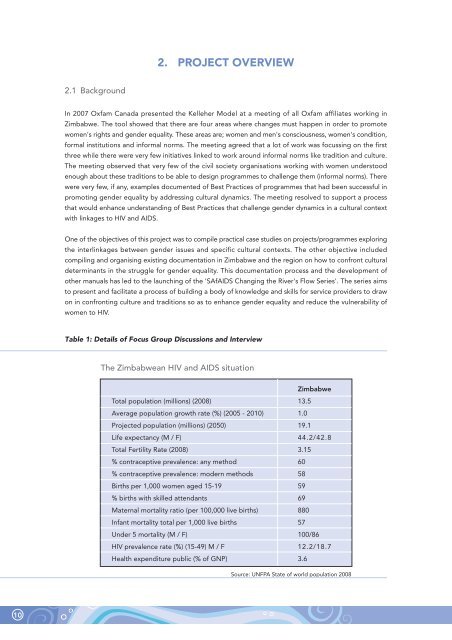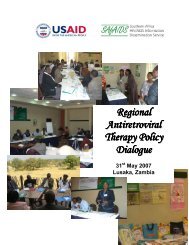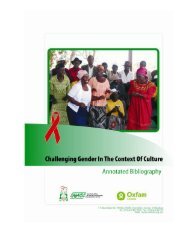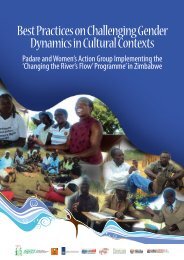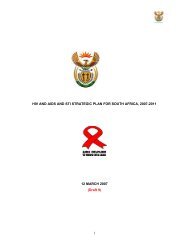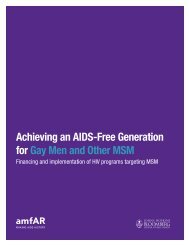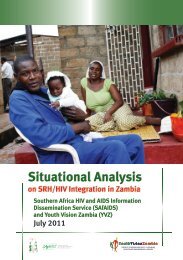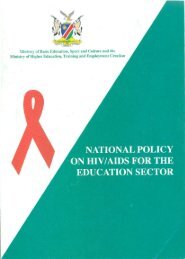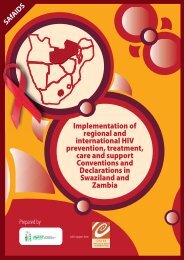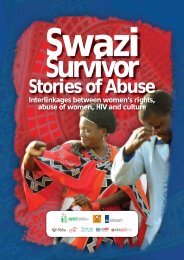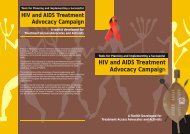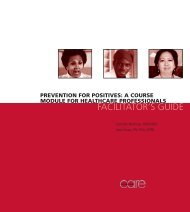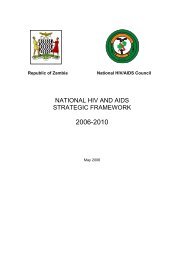Zimbabwean stories of "Best Practice" - SAfAIDS
Zimbabwean stories of "Best Practice" - SAfAIDS
Zimbabwean stories of "Best Practice" - SAfAIDS
Create successful ePaper yourself
Turn your PDF publications into a flip-book with our unique Google optimized e-Paper software.
2. PROJECT OVERVIEW2.1 BackgroundIn 2007 Oxfam Canada presented the Kelleher Model at a meeting <strong>of</strong> all Oxfam affiliates working inZimbabwe. The tool showed that there are four areas where changes must happen in order to promotewomen's rights and gender equality. These areas are; women and men's consciousness, women's condition,formal institutions and informal norms. The meeting agreed that a lot <strong>of</strong> work was focussing on the firstthree while there were very few initiatives linked to work around informal norms like tradition and culture.The meeting observed that very few <strong>of</strong> the civil society organisations working with women understoodenough about these traditions to be able to design programmes to challenge them (informal norms). Therewere very few, if any, examples documented <strong>of</strong> <strong>Best</strong> Practices <strong>of</strong> programmes that had been successful inpromoting gender equality by addressing cultural dynamics. The meeting resolved to support a processthat would enhance understanding <strong>of</strong> <strong>Best</strong> Practices that challenge gender dynamics in a cultural contextwith linkages to HIV and AIDS.One <strong>of</strong> the objectives <strong>of</strong> this project was to compile practical case studies on projects/programmes exploringthe interlinkages between gender issues and specific cultural contexts. The other objective includedcompiling and organising existing documentation in Zimbabwe and the region on how to confront culturaldeterminants in the struggle for gender equality. This documentation process and the development <strong>of</strong>other manuals has led to the launching <strong>of</strong> the '<strong>SAfAIDS</strong> Changing the River's Flow Series'. The series aimsto present and facilitate a process <strong>of</strong> building a body <strong>of</strong> knowledge and skills for service providers to drawon in confronting culture and traditions so as to enhance gender equality and reduce the vulnerability <strong>of</strong>women to HIV.Table 1: Details <strong>of</strong> Focus Group Discussions and InterviewThe <strong>Zimbabwean</strong> HIV and AIDS situationZimbabweTotal population (millions) (2008) 13.5Average population growth rate (%) (2005 - 2010) 1.0Projected population (millions) (2050) 19.1Life expectancy (M / F) 44.2/42.8Total Fertility Rate (2008) 3.15% contraceptive prevalence: any method 60% contraceptive prevalence: modern methods 58Births per 1,000 women aged 15-19 59% births with skilled attendants 69Maternal mortality ratio (per 100,000 live births) 880Infant mortality total per 1,000 live births 57Under 5 mortality (M / F) 100/86HIV prevalence rate (%) (15-49) M / F 12.2/18.7Health expenditure public (% <strong>of</strong> GNP) 3.6Source: UNFPA State <strong>of</strong> world population 200810


